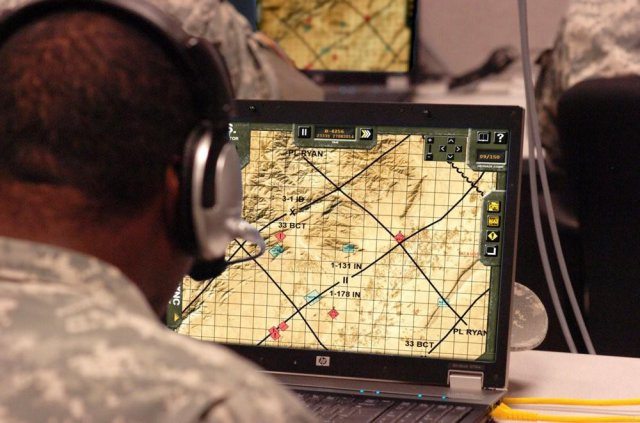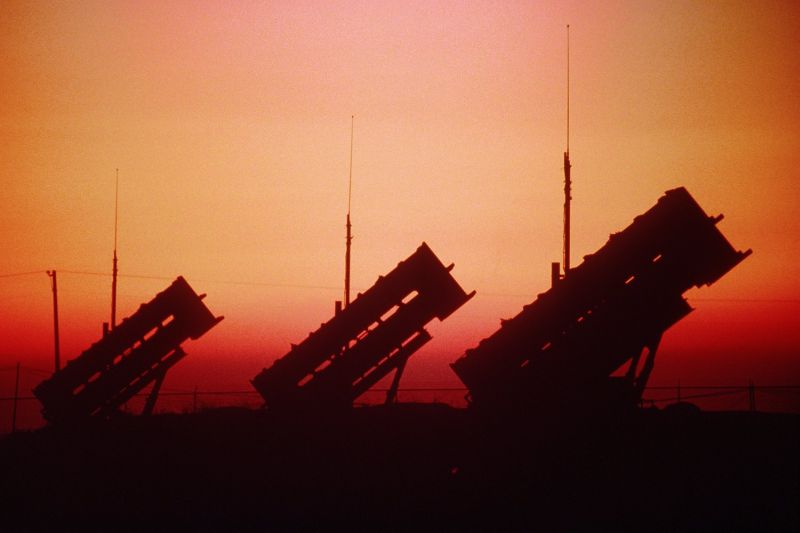As the U.S. Army Intelligence Center of Excellence continues its campaign to build a more effective and efficient future force, its Learning Innovation Office or LIO, is responding to the call to action by developing adaptable interactive multimedia instruction.
LIO’s latest IMI product release, the Collection Asset Management Simulator, can expand to serve multiple intelligence disciplines and staff functions within and outside the installation.
“CAMS isn’t one of those products that is developed for a single course and then put on a shelf to gather dust,” stated Capt. Luke Gosnell, executive officer, LIO.
Developed for the Military Intelligence Captain’s Career Course or MICCC, CAMS is an Afghanistan-based simulation that is meeting USAICoE’s need for high intensity conflict training.
Gosnell said CAMS offers a more contemporary scenario than MICCC’s Operation Northern Star and Operation Southern Cross which are based in Sierra Vista.
“It’s a serious game that allows students to plan requirements, task, direct and execute information collection inside a simple-to-use graphical user interface,” he explained. “The GUI is a baseline platform that can be easily modified by the user to expand upon other objective-based and learner-centric serious games.”
Chris Gonzales, LIO lead developer on the project, stated CAMS is also portable and requires very little system resources.
“The product does not require a gaming computer,” Gonzales said. “It’s a web application that can be played at someone’s home station or in their home for refresher or sustainment training.”
CAMS comprises two IMI products, Operation Kanjhar Strike and Operation Kanjhar Storm. Operation Kanjhar Strike is a 2-dimensional product with a high intensity conflict scenario and Operation Kanjhar Storm is a 3-dimensional product with a counterinsurgency setting.
He said the 2D product is focused on the tasks of a brigade collection manager.
Jamie Tate, MICCC training specialist, said Operation Kanjhar Strike teaches students how to conduct their own analysis as well as read and determine the pertinence of message traffic.
The 2D game also explains how to plot icons on maps. “Students place NAIs (or named areas of interest) on maps to track enemy movement and develop situational templates for their plans,” Tate said.
Students are graded on how well they use their collection assets.
“If they place the right or wrong assets in the wrong place at the wrong time, no information is generated to determine the enemy situation and plot maps,” he said. “It’s imperative students know what assets to use as well as how and when to use them or to employ cueing, redundancy and mixing.”
Gosnell said CAMS learning outcomes extend beyond collection asset management to situational order of battle, symbology and fusion analysis.
“Operation Kanjhar Strike incorporates fusion of various incoming intelligence sources,” he elaborated. “Whether they’re white noise, non-intelligence or intelligence, all sources must be linked, parsed and vetted for conversion into usable intelligence.”
Satisfied with the finished product, Gosnell, Gonzales and Tate acknowledged some challenges they encountered during development of Operation Kanjhar Strike.
“Maintaining the original vision was challenging,” Gosnell said.
Gonzales agreed, stating the scope changed during development. “I think it’s a bigger and better product,” he said. “It’s definitely broader in terms of scope.”
Feedback from beta tests spurred some changes to the product.
“During testing and validation, we received a lot of great feedback from a very mixed group of individuals,” Gosnell said. “Participants were officers, ranging from non-MI Soldiers awaiting course enrollment to current and past MICCC students as well as collection asset managers downrange.”
MICCC intends to implement Operation Kanjhar Strike by January. Beta testing for Operation Kanjhar Storm is complete, and modifications are underway.
According to Gosnell, CAMS’s unique features and capabilities are already capturing the attention of other USAICoE organizations and courses.
Most recently, the Joint Human Intelligence Officer Course submitted a request for service to modify CAMS and develop a supplement to their existing instruction.
“JHOC is looking to add more of a HUMINT (Human Intelligence) flavor to CAMS, which will facilitate its use as a study tool for course exercises and exams,” he said.
For more information on CAMS, contact LIO Project Manager Michelle Austin, 533.7140 or [email protected].











